If this were .NET, I'd ask how to convert List<List<MyClass> to List<MyClass>. However, I'm not very good with javascript and don't know how to ask that as a question using Javascript terminology!
My javascript object comes through like

And is created as:
js_datasets.push({
"DataItem0": {
lzabel: "This",
data: [[1408710276000, null],[1408710276000, 15]]
},
"DataItem1": {
lzabel: "That",
data: [[1408710276000, null],[1408710276000, 15]]
},
});
js_datasets.push({
"DataItem22": {
lzabel: "And other",
data: [[1408710276000, null],[1408710276000, 5]]
},
"DataItem23": {
lzabel: "And lastly",
data: [[1408710276000, null],[1408710276000, 1]]
},
});
Each object is the same "type" (if it matters).
I'd like to create a single list but I am failing to do so. My efforts are
var myDataSet = []; //this is the results of what I want, ideally as a single list
for (var i = 0; i < js_datasets.length; i++) {
if (i==0) {
myDataSet.push(js_datasets[i]);
}
else {
myDataSet.concat(js_datasets[i]);//does nothing
myDataSet.join(js_datasets[i]);//does nothing
}
...more logic
As you can see with the above, I've tried using push, concat and join.
If I update the code to only use push (and never use concat and join) then I get all the values I want, but again, as an array within an array.
Using concat and join do not add to the list.
So, if we can assume the 12 items in the array (pictured) all contain 10 items, I'd like to have a single list of the 120 items!
How can I simply convert this multidimension array (is it multidimension) to a single dimension array.